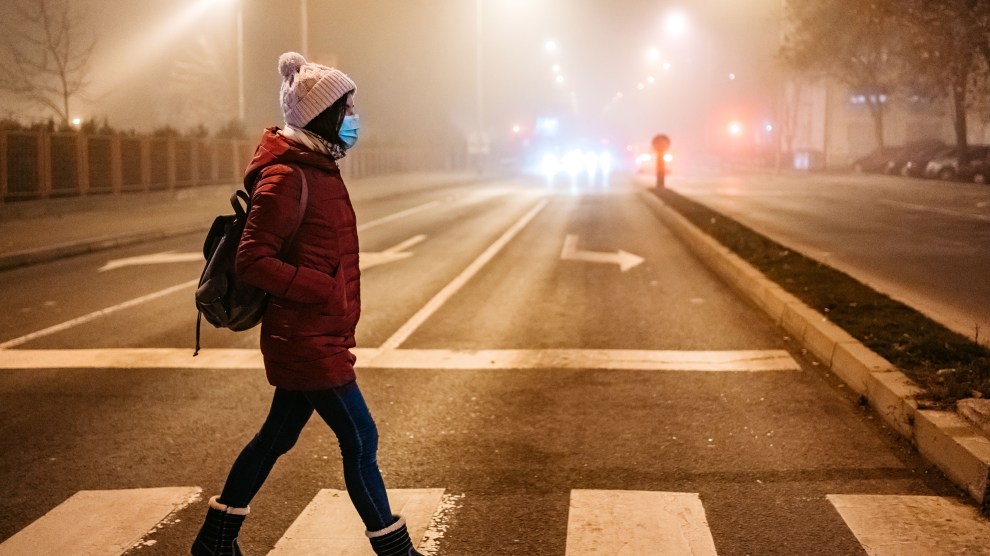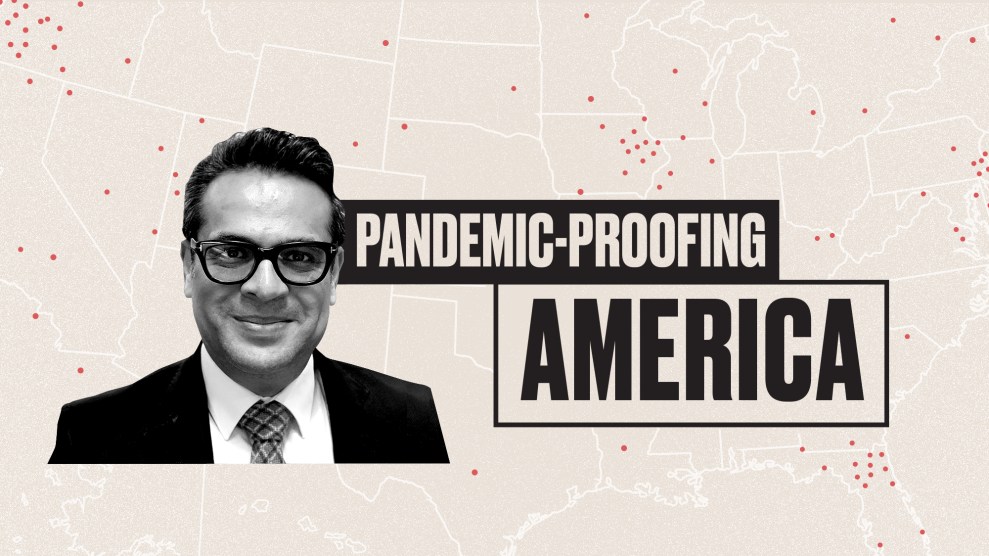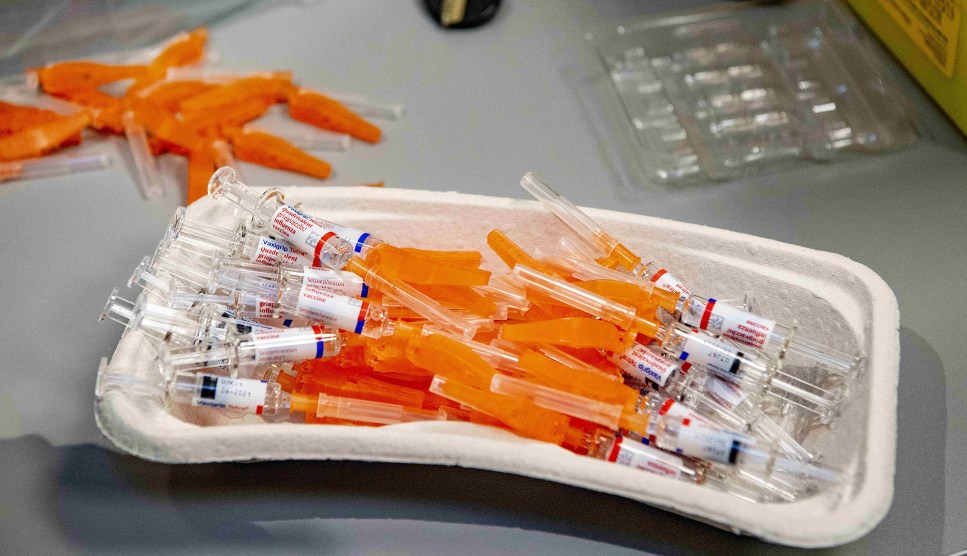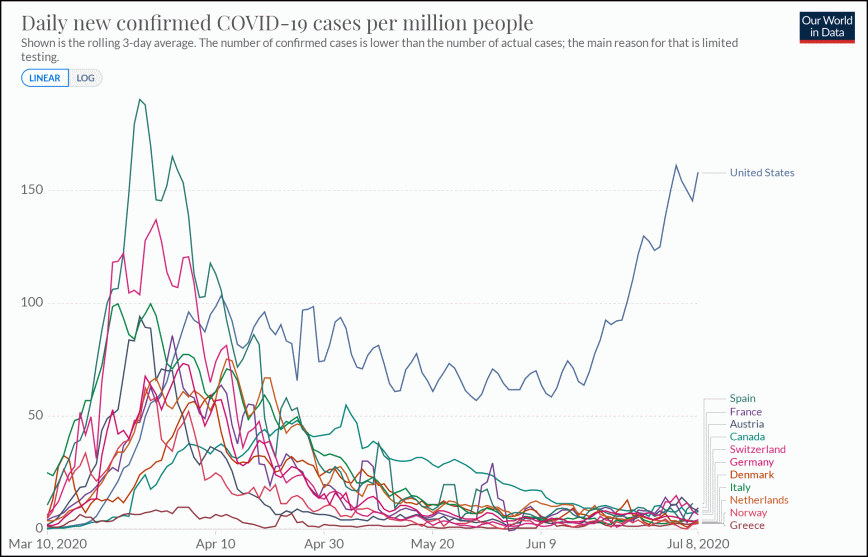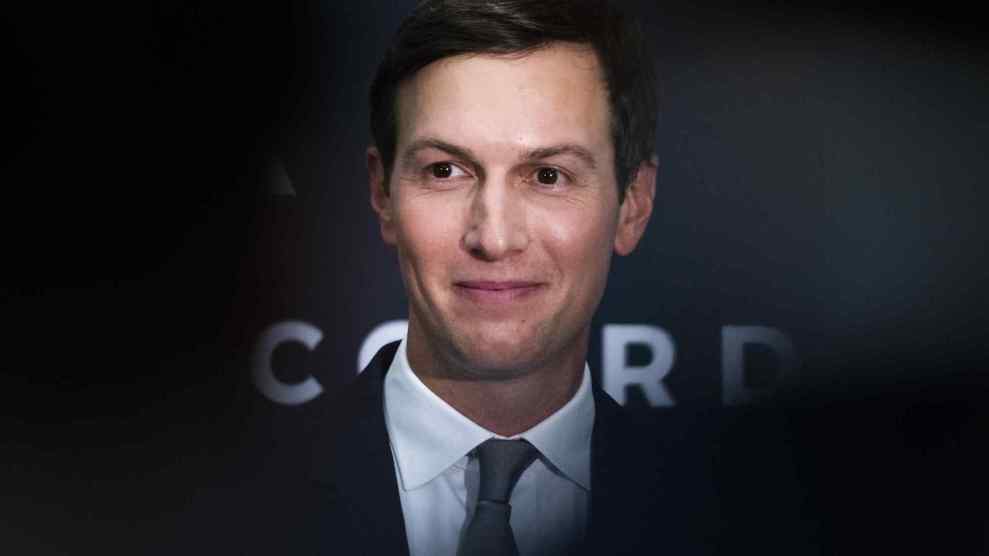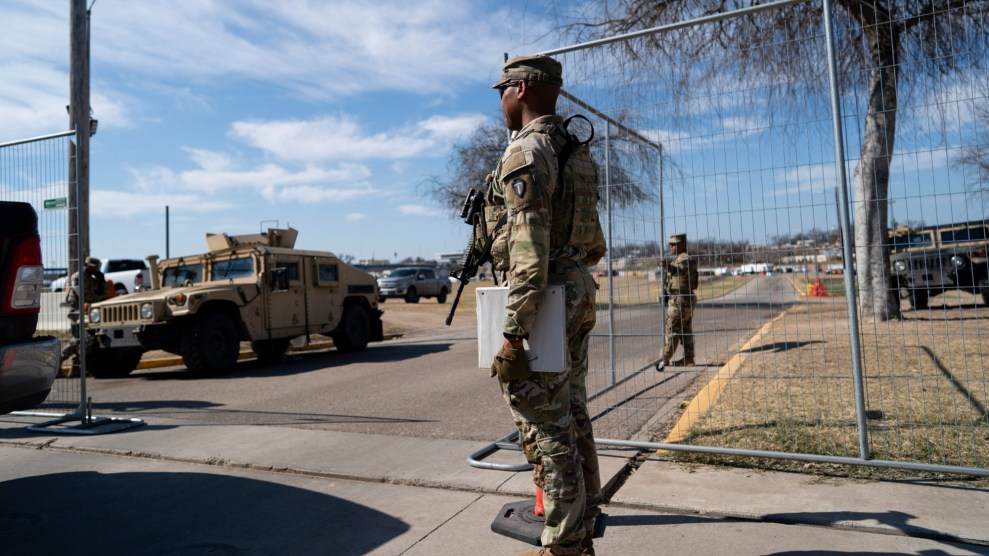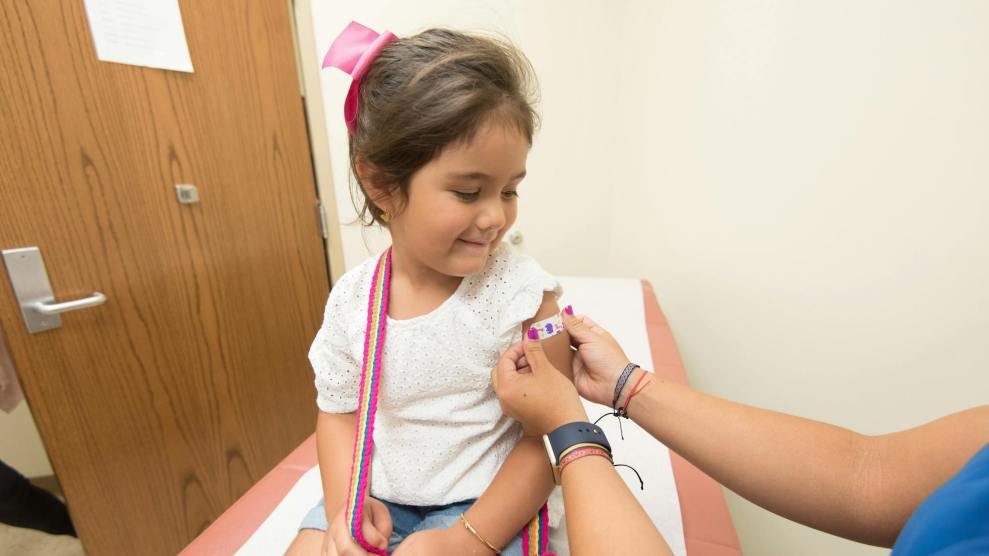We are in the throes of the coronavirus’ deadly third surge. Daily cases in the United States are getting dangerously close to 200,000, and a map with each state’s case count basically looks like one big hot spot. New stay-at-home advisories and mask mandates have been issued in some communities in the Midwest. California is putting the brakes on its reopening plans. ICUs are filling up fast. In North Dakota, health care workers who test positive but aren’t showing symptoms are being asked to report to work. Dr. Anthony Fauci recently warned that an additional 200,000 people could die of COVID by the spring if we don’t get things under control soon.
How did we get to such a dark place? In part, it’s the fault of the cold weather driving people indoors, where the virus spreads much more efficiently. At Mother Jones, we’ve charted the abject failure of the Trump administration to do anything about the spread of the coronavirus—you can see its sweep in our timeline, which is called Superspreader in Chief. We’ve watched in horror as our leaders sat back and let a quarter of a million Americans die, promoting dangerous misinformation. The Great Barrington Declaration, embraced by White House coronavirus adviser Scott Atlas, basically suggests letting the virus run its course—a plan that would lead to millions of unnecessary deaths, mostly in vulnerable communities. For many reasons, it’s looking like Americans are just giving up.
Our leaders’ attitude of indifference is contagious, and as a result, there’s an all-or-nothing kind of mentality as we go into the holidays: You can hole up in your house alone—or blithely ignore the disease and host a rager with 50 members of your extended family. Indeed, a new Ohio State poll out this week found that 38 percent of people surveyed planned to attend holiday gatherings of 10 or more people.
When looking around for others to blame, the Trump administration has cast public health officials as the enemies—bloodless, liberal data wonks who want to enforce draconian lockdowns while destroying what’s left of the economy. Nothing could be further from the truth: Scientists are working overtime to figure out how we can reduce our risk so we can continue to live our lives. (If we had an effective public health messaging system, we’d know that, but I digress.)
Here’s the secret that the Trump administration doesn’t want you to know: Science can set us free. Though the pandemic may seem to be dragging on indefinitely, we’re learning about the coronavirus at an unbelievable clip. Scientists know so much more now than they did back in March about how the virus spreads—and how to stop it in its tracks.
One of my son’s favorite books is Boy, Were We Wrong About Dinosaurs! It’s all about how paleontologists have revised their hypotheses over the years as they uncover more fossils to learn from. It’s kind of been the same experience for epidemiologists, virologists, and infectious disease experts over these last nine months. Here’s a far from comprehensive list of some of the leaps they’ve made. Let’s call it Boy, Were We Wrong About the Coronavirus!
Back in March, we thought: that the virus was transmitted on surfaces like doorknobs, counters, and food packaging.
Now we know: that while the virus can survive on surfaces, it’s mostly transmitted through respiratory droplets from breathing, talking, laughing, singing, coughing, and sneezing.
What that means: Most public health experts still emphasize the importance of hand-washing and regular surface cleaning, but they don’t recommend wiping down your groceries.
Back in March, we thought: that masks weren’t effective in preventing the spread of the virus.
Now we know: that cloth face coverings can protect both the wearer and those around them. One recent University of Washington study estimated that universal mask-wearing could save 130,000 lives by February. Masks may even act as a crude vaccine, exposing wearers to just enough virus to trigger an immune response.
What that means: You can feel pretty safe running to the grocery store, the doctor’s office, or other public indoor spaces if you and others are wearing masks. You can minimize your risk of transmitting the virus during a holiday gathering if everyone wears masks and stays outside.
Back in March, we thought: that only people who showed symptoms could transmit the coronavirus.
Now we know: that asymptomatic people can and do spread the virus.
What that means: Health care professionals can now tell patients who have been exposed to someone with the virus to isolate right away, even if they don’t feel sick, thereby preventing additional infections.
Back in March, we thought: that we’d never be able to scale up testing enough to make a difference.
Now we know: that while we still have a long way to go, testing is free, quick, and readily available in many places. Just this week, there was more good news on the testing front: The FDA has authorized the first at-home rapid test for the virus.
What that means: We now have the ability to catch cases early, before the infected person has a chance to spread the virus to many others. The key now is convincing people to be tested and investing in systems to warn people who have been in close contact with those who test positive.
Back in March, we thought: that air filtration systems might not help limit the spread of the virus.
Now we know: that while they’re not enough on their own to protect us, when used correctly and in combination with masks, HEPA filters can help.
What that means: Installing filters can offer an additional layer of protection for essential spaces like hospitals and classrooms.
Back in March, we thought: that schools would be the main way that the coronavirus spreads.
Now we know: that while school outbreaks do occur, indoor spaces where adults congregate are much more likely to lead to outbreaks. A recent study in the journal Nature found that in urban areas, restaurants, gyms, hotels, cafes, and houses of worship were the source of most superspreader events. Schools, meanwhile, have not seen as many outbreaks as experts initially feared, especially at the elementary level.
What that means: We can prioritize reopening schools with appropriate safety measures—and putting more restrictions on restaurants, bars, gyms, and other adult-centered businesses.
To explain the power of these measures, public health experts like to use the analogy of layers of slices of Swiss cheese. In one slice, there are many holes. If you add another slice, it covers up a few of those holes, and so on. The more layers, the closer you get to an opaque hunk of cheese. The more virus-protection strategies you layer on, the less likely it is the virus will sneak through.
Of course there are more layers should infection occur: Coronavirus treatments have improved immensely—back in March the ventilator was basically the only tool doctors had, and it wasn’t a very good one. Now we know that “proning”—placing patients on their stomach—can help them breathe better. We have a fleet of promising medications, including, as of last week, an antibody treatment that seems to be effective in preventing severe disease. The brass ring, of course, is the promise of several highly effective vaccines expected to begin distribution before year’s end.
But as I’ve written before, medical breakthroughs on their own won’t stop this virus. What’s more, despite what our leaders say, we don’t have to sit around and wait for a miracle cure, nor must we throw our hands up in despair and let the virus run loose. We do have agency in this situation. We have the power to protect ourselves and our loved ones, thanks to the dazzlingly fast and careful work of scientists. The best way to honor that work is by letting it empower us.

